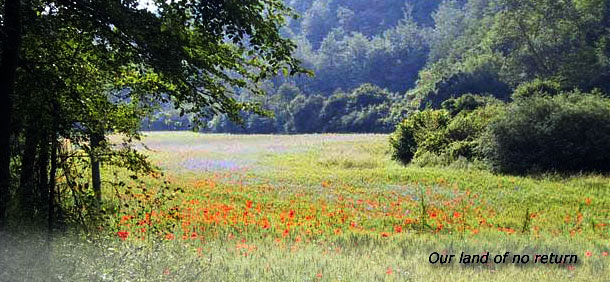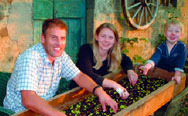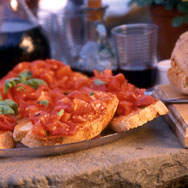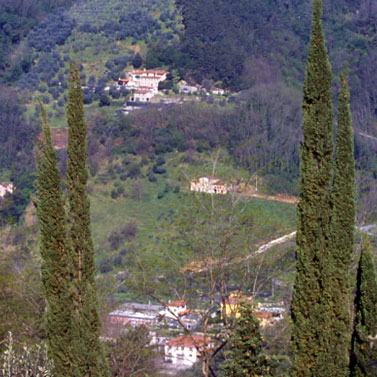- Villa search

- Canaries
- Caribbean
- Croatia, Bulgaria and Hungary
- Cyprus
- Florida
- France and Corsica
- Greece
- Italy
- Lakes and Mountains
- Madeira
- Malta and Gozo
- Portugal
- South Africa
- Spain - Balearics
Image composition by Ryan Kemmery

Information
Related articles
Sarah Fraser and her husband Richard Turnball – featured in Channel 4’s No Going Back – have made the move from the Yorkshire Moors to an Italian villa with a 15-acre olive farm. Sarah tells Angela West that Tuscany ticks all of the boxes, for holidays and a home in the sun

Once bitten, you’re smitten… Tuscany is one of those places that tugs at the heartstrings. Whatever your wishlist, the region has it all: along with lakes, golden beaches and rolling hills blanketed in sunflowers, there’s art and architecture, palazzi and piazzas for culture-vultures, ski resorts for the active and sleepy mediaeval villages for the laid-back.

Richard, Sarah and son sorting olives
“When you say you’re holidaying in Tuscany, the response is, ‘Ooh… how lovely,’” says Sarah. “If you say you’re buying, it provokes the same reaction as buying a house in Kensington: ‘very nice!’ The region has worldwide appeal… think Florence, Pisa and romance.”
Property is more expensive here than in other areas of Italy for good reasons, says Sarah. “In cheaper areas such as Umbria, Le Marche and southern Italy, there’s either an accessibility problem or there is very little happening,” she explains. “Hillsides for miles around might look lovely, but excitement about the view soon wears thin when there’s a long drive to civilisation. In southern Italy, for three months of the year it’s too hot to move; people come out only at night when temperatures drop slightly below 38°C!”
The northern part of Tuscany – Florence, Pistoia, Lucca and Pisa – is a ‘working country’ of wine making, olive growing and industry. “This is the real Tuscany – stunningly beautiful, plenty of work, lots going on and, away from tourist attractions, little English spoken,” says Sarah.
“The Italian Riviera stretches for sun-drenched miles, with wonderful fishing villages and islands to explore as well as traditional resorts such as Viareggio. The true ‘Chiantishire’ area around Siena, San Gimignano and Volterra is stunningly beautiful. Arrezzo is wonderful and Cortona has enough vineyards to keep even the most demanding drinker happy.”

Food and wine is a big part of the Italian lifestyle
An already well-established property market has risen steadily, thanks to increased media coverage and low-cost flights to Tuscany’s four airports – Pisa, Florence, Bologna and Genoa. The region’s travel infrastructure is also good with inexpensive trains and the A1 road from Florence to Rome.
“In popular areas, the market is strong and will remain so,” says Sarah. “The demand comes not only from international buyers, but also from Italians who are moving for work reasons. They prefer towns, though, so the best buys are in the countryside, and there are certainly bargains still to be had.”
Moving to Italy with children isn’t generally a problem, she says. “They’re so much more resilient than we give them credit for – all they need is family support and they’re fine. Schools are excellent. They start at six years. There are free, full-time nurseries which take children when they're three, and state-run nurseries for working mums with younger children.”
What about the infamous Italian bureaucracy? “Forget everything you’re accustomed to in the UK. Things take a long time in Italy; that’s just the way it is. You aren’t being persecuted because you’re foreign – Italians have the same problems. The legal paperwork involved when buying a home can take up to six months, sometimes longer, but that can be useful if buyers need extra time to raise funds. The process involves a lot of form-filling and triplicate photocopying… if you’ve a couple of spare weeks, it shouldn’t be a problem!”
 home | destinations and editorial | villa search | property for sale | car hire | flights | services
home | destinations and editorial | villa search | property for sale | car hire | flights | services
villaseek blog | contact villaseek | links and resources | advertise your villa© Dune Root Ltd and Villaseek.com 2012 - Caribbean
- Canaries